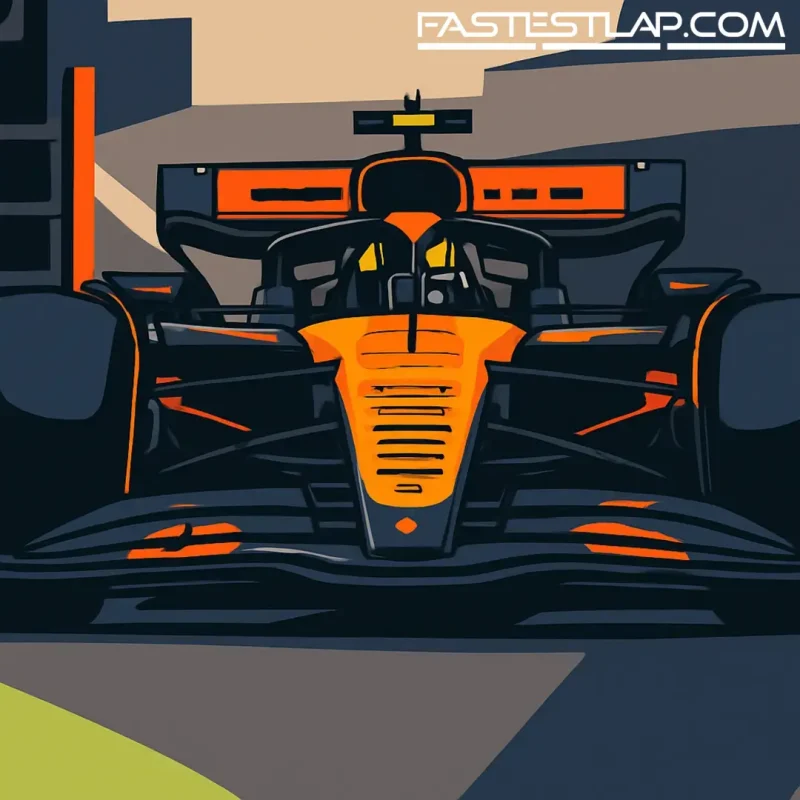Nyck de Vries is back in papaya—albeit behind a monitor rather than a steering wheel.
McLaren has confirmed the Dutchman has been working as a simulator driver since the start of the 2025 season, a detail that surfaced after de Vries posted a late-night shot from the team’s sim following Friday practice in Singapore. It’s a low-profile role, but an important one at a race where the stopwatch moves as quickly as the shadows under the lights.
De Vries knows his way around a comeback. He first landed in F1 with that memorable stand-in at Monza in 2022, bagging ninth for Williams on debut and earning himself a shot with Red Bull’s junior team—then AlphaTauri, now Racing Bulls—the following year. The full-time seat didn’t stick. Ten races, no points, and he was replaced by Daniel Ricciardo before the summer break.
What followed looked, from the outside, like a reset. De Vries went back to familiar ground in Formula E—the series he won in 2021—and took on World Endurance Championship duties with Toyota. But he didn’t disappear from F1. In fact, he resurfaced quietly with McLaren last November, turning laps at Paul Ricard in a Pirelli tyre test: his first time back in current machinery since the AlphaTauri exit.
That’s when the dots started to join up. De Vries’ simulator return is, in one sense, a homecoming. McLaren supported his junior rise from 2010, gave him early sim mileage, and only cut ties at the end of 2018 when it was clear an F1 race seat wasn’t on the horizon. Zak Brown said at the time that freeing him up was the fairest route to keep his career moving. He duly moved to Mercedes as test and reserve in 2021, and the rest—you know the Monza story.
Why does this matter now? Because the modern F1 weekend is as much about the guy in the darkened room back at base—or upstairs at the track—running through setup permutations at 2am as it is about the driver clipping apexes at Turn 5. Street circuits like Marina Bay magnify that, with bumps, evolving grip and punishing walls shifting the balance hour by hour. McLaren’s MCL39 has looked sharp this year, but extracting the last two-tenths on a surface that goes from greasy to grippy between sessions lives and dies by correlation. That’s the sim team’s world.
And de Vries is a strong hire for that work. He’s a proven operator with a tidy, technical style—handy when the job is to run repeatable, comparative programmes and cut through noise. Add the tyre knowledge from that Pirelli outing and the energy-management instincts honed in Formula E, and you’ve got someone who can help Lando Norris and his teammate chase balance without burning through track time.
It’s also a pragmatic move from McLaren. Simulator roles aren’t headline-grabbers, but they’re competitive battlegrounds. The best teams invest in experienced hands who can guide development and stress-test upgrades before they leave the factory. De Vries fits the brief: 11 grand prix starts, a championship in an FIA world series, and recent mileage in top-level machinery. He won’t be out front on Sunday, but his fingerprints might still be on the lap time.
The timing has a certain symmetry, too. Under the Singapore lights, Norris was back at it in FP2, threading the MCL39 through the night as the garage pored over data. De Vries, somewhere nearby in a sim bay, was doing the same—only his arena comes with more coffee and fewer G-forces.
For McLaren, it’s another marginal gain in a season where the margins are razor-thin. For de Vries, it’s a return to a team that once backed his promise, now trusting his experience. Not every F1 chapter ends in a race seat. Some of the most valuable ones are written in the quiet hours, with a driver you don’t see, helping the ones you do.




